Jamille & Sacha's Americas trip
I expected Cuba to be different and it didn’t disappoint. Stepping off the plane, one of the first things we noticed were female security guards wearing essentially school uniforms with patterned stockings. Male military members with buzzcuts patrolling the baggage claim area looked weirdly American. An hour wait for our baggage and then an hour wait in line to exchange money confirmed what I had heard – long lines are a way of life in Cuba. I was so buzzed at being in Cuba, the wait just made me laugh and vow to adopt a more relaxed Latin American attitude to time. A physical altercation between locals and attracting quite a crowd outside the airport helped provide a colourful distraction while we were in line. Finally ready, our driver who had waited patiently led us to our ride – an old, beaten up car which we rode with the windows down taking in the sights and smell of Havana.
I read an article suggesting that Cuba was shifting paradigms away from Communism and the proposed Constitution omits reference to Communism, allowing private ownership of property. From what I observed in our short but enticing 12 days in Cuba, although there are clear signs that Cuban society is changing, its recent communist history still permeates especially in the smaller villages. The same mural/graffiti work that can be seen all over Latin America abounds here in Cuba. Often, the work is of a political nature and contain many odes to Castro. The word ‘Revolution’ seems to be incorporated into the name of everything from streets to hotels. Small grocery stores stock a meagre selection of goods even in Havana. Apartments in the centre of Havana are mostly occupied rent free by people with party connections who moved in after the imperialist oppressors were driven out during the revolution. The internet is scarce and it’s only possible to connect in certain parks and outside hotels. We can always spot a wifi spot a mile away – there would be a cluster of people intently peering down at their phones. Not even the university has wifi. Private businesses still seem scarce. Most shops, restaurants and bars operate out of renovated apartments in large apartment blocks so they can be difficult to find. We walk past the American embassy several times and even though it was re-opened a few years ago it exists on a skeleton staff and is always guarded by several armed soldiers. In Trinidad, we tour a coffee plantation where the owner must give 90% of the crop to the government. The town of Trinidad really grows on me wandering the streets and watching people live their lives. Many people seem to live their lives outside watching the world go by and interacting with each other. All the apartments have doors that open right onto the cobbled streets. Inevitably, the front room is the loungeroom and people can be seen watching opera or religious shows.
A 1950s sense of a communist society (or probably more accurately socialist society) is most evident during our 4 night stay at Playa Giron, a small seaside village where everyone knows each other. The usual mode of transport is horse and carriage which our hosts use to take us everywhere we need to go. We sit on the porch of our Casa Particular in the early evenings on rocking chairs watching as the sun sets in a glorious pink and villagers pass by. We have never said so many friendly greetings to strangers. Shopping seems to be done by locals passing along the street calling out their wares of bananas etc and people meandering out to purchase or barter for whatever they need. One day we spot three truck fulls of young men in khaki uniform being taken out of town where they work on the sides of the road. We are told that they are doing their compulsory year long unpaid military service. On a trip that takes us past the Bay of Pigs, we see a big roadside sign in Spanish. While I can’t read the Spanish writing, the words American and Imperialist stand out and the pristine upkeep of the sign makes it clear there is still some resentment towards the Americans.
Our hosts, Jose and Nena, and their grown son, Yasmine, are truly welcoming. We practise our terrible Spanish in many laughter filled conversations with Jose and Nena and play the national obsession of dominoes with Yasmine in the evenings. Dinners consist of lobster, fish and crab. Jose and Nena take us to a local swimming hole, a cenote, where Jose generously plies us with rum and a touch of cola. It is our favourite stop in Cuba and the bear hugs we give and receive when we leave are genuine. Yasmine seems particularly sad – I was half expecting him to propose to Jamille.
There are growing signs of capitalism, however, especially in Havana. Private restaurants are taking over from government ones, there are ATMS’s that accept Visa cards and while we were there, testing for a wider network. Tips are now expected or included with service. The youth in Havana however appear disaffected. Neither revolutionaries like their grandparents nor yet reaping the benefits of capitalism, they see a little lost. They gather in large numbers in the streets late at night, often as young as 12, drinking heavily with the underlying aggressiveness that comes from a combination of hormones and too much alcohol. Bottles of rum go for as little as $2. One night we attended an open air free concert in Havana which teemed with thousands of mostly teenagers. As we left, we passed a teenage girl who collapsed in front of us. We helped her up wondering where the heck we could take her to make sure we was safe and the first thing she did was make the universal sign for money. Even nearly passed
smccl63
37 chapters
15 Apr 2020
Cuba, the land that time forgot
September 06, 2018
|
Cuba
I expected Cuba to be different and it didn’t disappoint. Stepping off the plane, one of the first things we noticed were female security guards wearing essentially school uniforms with patterned stockings. Male military members with buzzcuts patrolling the baggage claim area looked weirdly American. An hour wait for our baggage and then an hour wait in line to exchange money confirmed what I had heard – long lines are a way of life in Cuba. I was so buzzed at being in Cuba, the wait just made me laugh and vow to adopt a more relaxed Latin American attitude to time. A physical altercation between locals and attracting quite a crowd outside the airport helped provide a colourful distraction while we were in line. Finally ready, our driver who had waited patiently led us to our ride – an old, beaten up car which we rode with the windows down taking in the sights and smell of Havana.
I read an article suggesting that Cuba was shifting paradigms away from Communism and the proposed Constitution omits reference to Communism, allowing private ownership of property. From what I observed in our short but enticing 12 days in Cuba, although there are clear signs that Cuban society is changing, its recent communist history still permeates especially in the smaller villages. The same mural/graffiti work that can be seen all over Latin America abounds here in Cuba. Often, the work is of a political nature and contain many odes to Castro. The word ‘Revolution’ seems to be incorporated into the name of everything from streets to hotels. Small grocery stores stock a meagre selection of goods even in Havana. Apartments in the centre of Havana are mostly occupied rent free by people with party connections who moved in after the imperialist oppressors were driven out during the revolution. The internet is scarce and it’s only possible to connect in certain parks and outside hotels. We can always spot a wifi spot a mile away – there would be a cluster of people intently peering down at their phones. Not even the university has wifi. Private businesses still seem scarce. Most shops, restaurants and bars operate out of renovated apartments in large apartment blocks so they can be difficult to find. We walk past the American embassy several times and even though it was re-opened a few years ago it exists on a skeleton staff and is always guarded by several armed soldiers. In Trinidad, we tour a coffee plantation where the owner must give 90% of the crop to the government. The town of Trinidad really grows on me wandering the streets and watching people live their lives. Many people seem to live their lives outside watching the world go by and interacting with each other. All the apartments have doors that open right onto the cobbled streets. Inevitably, the front room is the loungeroom and people can be seen watching opera or religious shows.
A 1950s sense of a communist society (or probably more accurately socialist society) is most evident during our 4 night stay at Playa Giron, a small seaside village where everyone knows each other. The usual mode of transport is horse and carriage which our hosts use to take us everywhere we need to go. We sit on the porch of our Casa Particular in the early evenings on rocking chairs watching as the sun sets in a glorious pink and villagers pass by. We have never said so many friendly greetings to strangers. Shopping seems to be done by locals passing along the street calling out their wares of bananas etc and people meandering out to purchase or barter for whatever they need. One day we spot three truck fulls of young men in khaki uniform being taken out of town where they work on the sides of the road. We are told that they are doing their compulsory year long unpaid military service. On a trip that takes us past the Bay of Pigs, we see a big roadside sign in Spanish. While I can’t read the Spanish writing, the words American and Imperialist stand out and the pristine upkeep of the sign makes it clear there is still some resentment towards the Americans.
Our hosts, Jose and Nena, and their grown son, Yasmine, are truly welcoming. We practise our terrible Spanish in many laughter filled conversations with Jose and Nena and play the national obsession of dominoes with Yasmine in the evenings. Dinners consist of lobster, fish and crab. Jose and Nena take us to a local swimming hole, a cenote, where Jose generously plies us with rum and a touch of cola. It is our favourite stop in Cuba and the bear hugs we give and receive when we leave are genuine. Yasmine seems particularly sad – I was half expecting him to propose to Jamille.
There are growing signs of capitalism, however, especially in Havana. Private restaurants are taking over from government ones, there are ATMS’s that accept Visa cards and while we were there, testing for a wider network. Tips are now expected or included with service. The youth in Havana however appear disaffected. Neither revolutionaries like their grandparents nor yet reaping the benefits of capitalism, they see a little lost. They gather in large numbers in the streets late at night, often as young as 12, drinking heavily with the underlying aggressiveness that comes from a combination of hormones and too much alcohol. Bottles of rum go for as little as $2. One night we attended an open air free concert in Havana which teemed with thousands of mostly teenagers. As we left, we passed a teenage girl who collapsed in front of us. We helped her up wondering where the heck we could take her to make sure we was safe and the first thing she did was make the universal sign for money. Even nearly passed
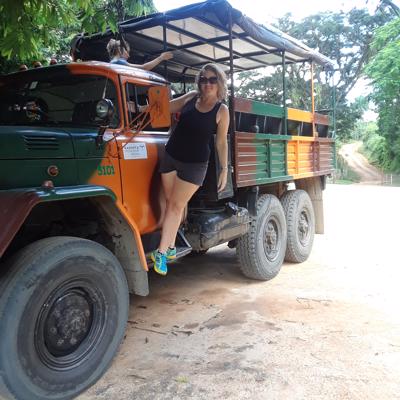
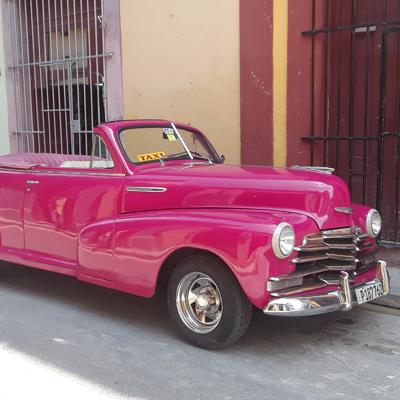
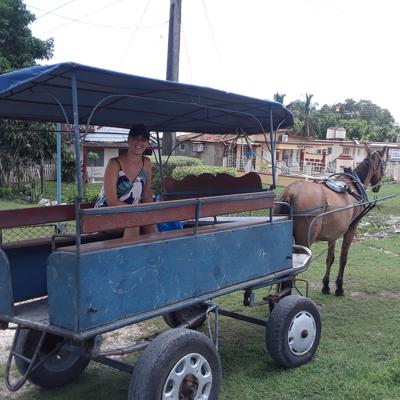
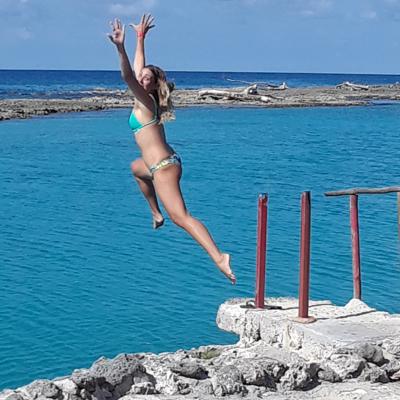
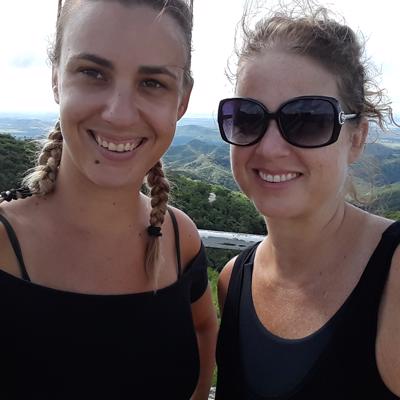
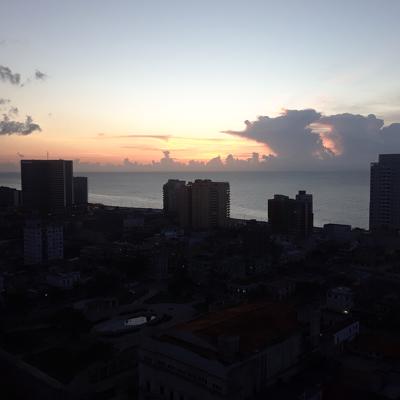
out, she recognised as Gringo tourists who have more money than her. One of her more sober friends appeared to carry her away.
Salsa seems to be the heart and soul of the country. Nearly everyone does it instinctively. Jamille and I got a private salsa lesson but we were hopeless. The lesson was worth it to watch Jamille and the instructor. She found it difficult to accept that we had to follow set steps and put in a freestyle move every 30 seconds. Lacking a sense of humour, the instructor was not amused and would make her repeat the step. However, Jamille proved more stubborn than him and kept ad lobbing. Eventually, he was so frustrated, he cut the lesson short. We didn’t really need to pay for lessons though. T the salsa bars, barely 5 minutes would pass before people were asking us to dance and offering to teach us when we said we couldn’t salsa. One memorable Sunday afternoon was spent listening to frenetic Rumba music in a little outdoor street and drinking Cuban beer while attempting to speak Spanish with locals.
1.
Nearly didn't make it
2.
Layover in Guangzhou - Ghost town
3.
4th July, Independence Day
4.
Sightseeing in LA
5.
Vegas baby!
6.
First full day in Sin City
7.
30th birthday Pool Party
8.
Rinse, repeat
9.
Grand Canyon Helicopter tour
10.
Goodbye Vegas, Hello NOLA
11.
Garden District & cemetery
12.
The road trip starts
13.
Swamp tour
14.
Clarksdale - home of the Delta Blues
15.
Memphis, Beale Street
16.
Sunday Church
17.
Arrive in Nashville
18.
Cowboy boots, Boy George & more crazy uber drivers
19.
Little Rock
20.
Dallas
21.
Rodeo
22.
Almost car chase
23.
Ghost Tour
24.
Kayak Swamp Tour
25.
Goodbye America, hola Mexico
26.
Mexico City & Teotihuacan Pyramids
27.
San Miguel de Allende
28.
Beachside, finally
29.
Puerto Vallarta, tourist town
30.
Copper Canyon, El Chepe
31.
Mountain biking is not my forte
32.
Canyon Hike, Creel
33.
Chihuahua
34.
Dr Google & San Cristobal
35.
New chapter
36.
Beaches & baby turtles in Cancun
37.
Cuba, the land that time forgot
Share your travel adventures like this!
Create your own travel blog in one step
Share with friends and family to follow your journey
Easy set up, no technical knowledge needed and unlimited storage!